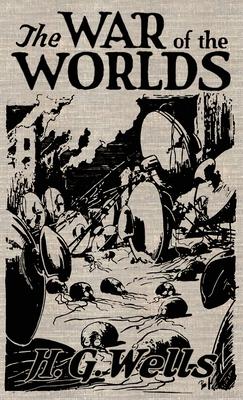Written by the four-time nominee of the Nobel Prize in Literature, The War of the Worlds by H. G. Wells is known as one of the earliest stories to depict conflict between the human race and an extraterrestrial race. H. G. Wells, praised as the father of science fiction, was an influential social critic who focused on the future. During his lifetime, he wrote dozens of novels and short stories that examined how different society would be in his progressive future vision of the world. While his science fiction imagined things such as alien invasions and time travel, he also predicted nuclear weapons, space travel, and even the internet through his works.
The War of the Worlds is a first-person narrative of an unnamed protagonist from Surrey who lives through the invasion of southern England being by Martians. A canister drops from the sky in a sudden explosion and lands near the narrator's home, opening to reveal an alien who has grey skin with large eyes and tentacles. As more and more of these canisters drop, a human delegation forms and approaches the Martians while waving white flags of peace, but the Martians vaporize the humans immediately. As the British military arrives, the humans of southern England engage in a war to try and stop the Martians from assembling their unknown machinery, but the military cannot match the might of the Martians and their technology.
The War of the Worlds has been praised for its prediction of technology, its cultural criticism of Victorian England, and its influence on science fiction that led to later works on alien invasions. The popularity of The War of the Worlds garnered wildly different interpretations in aspects such as evolution, religion, and even colonialism and imperialism. Despite its heapings of social criticism, it remains a thrilling and enjoyable read for those who wish to read one of the stories that birthed the genre of science fiction.
This edition contains the original illustrations from the book as first published in 1898.
